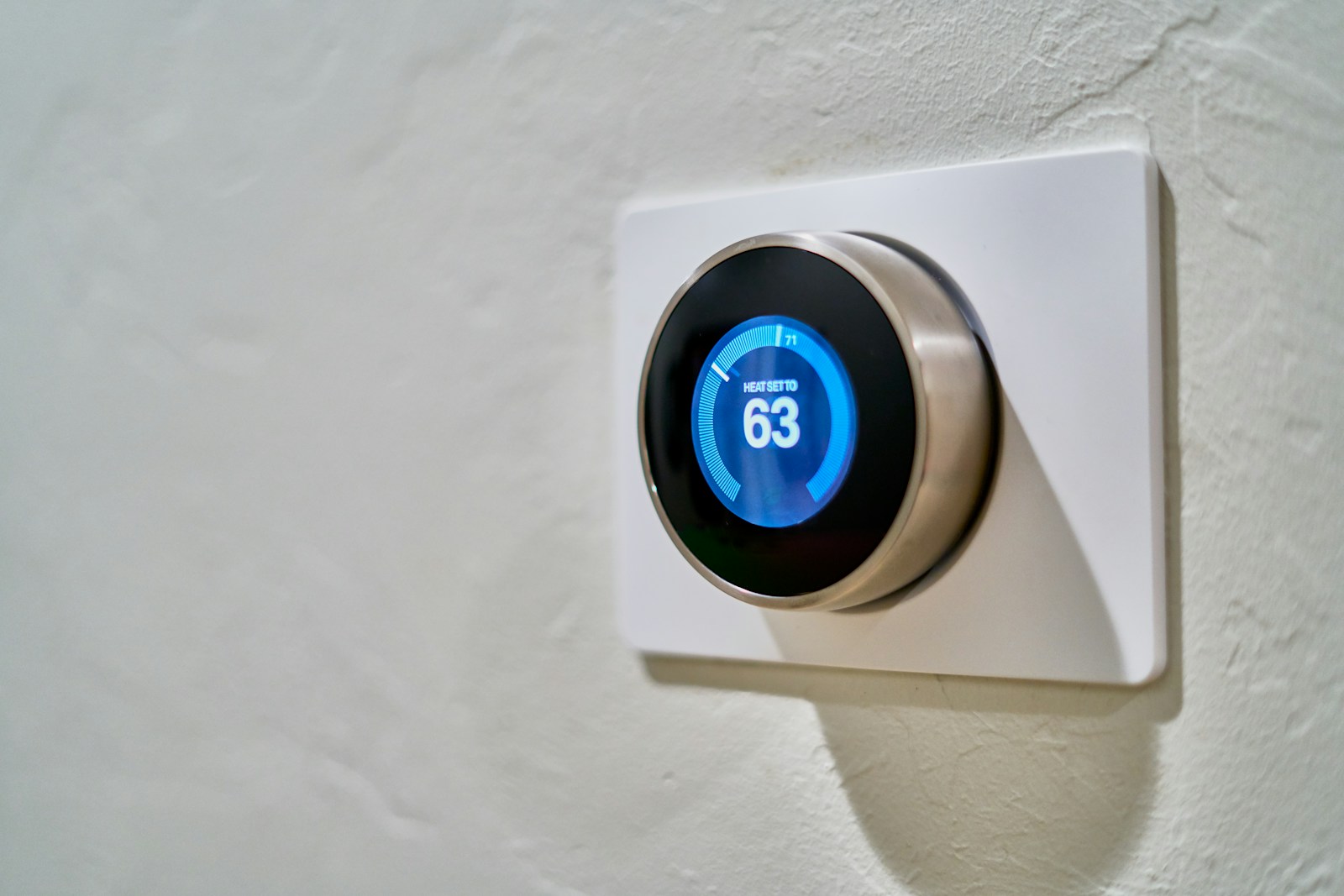TL;DR:
– Smart thermostat homes save energy through advanced technology and automation.
– Upgrading to a smart thermostat offers cost savings, comfort, and sustainability benefits.
– Key features for smart thermostats include programmable settings, remote access, and HVAC compatibility.
– Installation involves simple steps, Wi-Fi connection, and troubleshooting guidance.
– To optimize efficiency, utilize energy-saving features, monitor usage, and adjust temperature settings strategically.
Introduction
Welcome to the world of Smart Thermostat Homes, where innovation meets sustainability in perfect harmony. As we delve into the realm of energy-conscious living, the concept of a Smart Thermostat Home emerges as a beacon of efficiency, comfort, and environmental stewardship. In this blog post, we will explore five remarkable ways in which a Smart Thermostat Home can revolutionize your energy consumption habits, ultimately leading to significant cost savings and a reduced carbon footprint. Join me on this exploration as we uncover the transformative power of technology in creating a more sustainable and eco-friendly living environment.
How Does a Smart Thermostat Home Work?
Are you curious about how smart thermostat homes function? Let’s delve into the intricacies of this cutting-edge technology to see how it can revolutionize the way we control our indoor environments.
Understanding the Basics of Smart Thermostats
Smart thermostats are innovative devices that enable precise control over your home’s heating and cooling systems. By leveraging advanced sensors and algorithms, these devices can learn your preferences, adjust settings accordingly, and optimize energy efficiency.
Benefits of Smart Thermostat Technology
One of the key advantages of smart thermostats is their ability to enhance comfort while reducing energy consumption. They can adapt to your schedule, detect when you’re away, and make intelligent adjustments to regulate temperature levels, resulting in cost savings and environmental benefits.
Integration with Home Automation Systems
Smart thermostats can seamlessly integrate with other smart home devices, such as lighting systems and security cameras, to create a unified ecosystem. This interconnected approach allows you to control multiple aspects of your home through a centralized platform, providing convenience and efficiency.
By embracing smart thermostat technology, you can transform your living space into a sustainable and comfortable environment that aligns with modern lifestyles.
Why Should You Upgrade to a Smart Thermostat Home?
Imagine coming home to a house that adjusts its temperature based on your preferences without you lifting a finger. This futuristic scenario is made possible by smart thermostat technology. But why should you consider upgrading to a smart thermostat home? Let’s explore the compelling reasons.
Cost Savings on Energy Bills
One of the primary benefits of a smart thermostat home is the potential for significant cost savings on energy bills. These devices learn your heating and cooling patterns and adjust settings to optimize efficiency, leading to reduced energy consumption and lower utility bills.
Enhanced Comfort and Convenience
Say goodbye to constantly adjusting your thermostat manually. With a smart thermostat, you can set personalized schedules, control the temperature remotely via smartphone apps, and enjoy a comfortable living environment tailored to your preferences.
Environmental Impact and Sustainability
By making the switch to a smart thermostat home, you are not only benefiting your wallet but also the environment. These devices promote energy conservation by efficiently managing heating and cooling systems, reducing your carbon footprint and contributing to a more sustainable lifestyle.
What Features Should You Look for in a Smart Thermostat for Your Home?
Programmable Settings and Scheduling Options
When choosing a smart thermostat for your home, look for models that offer programmable settings and scheduling options. This feature allows you to create customized heating and cooling schedules based on your daily routine, optimizing energy efficiency and comfort. With the ability to set different temperatures for specific times of the day, you can ensure that your home is always at the perfect temperature without wasting energy when no one is home.
Remote Access and Control via Smartphone Apps
One of the key features to consider in a smart thermostat is the ability to control it remotely through a smartphone app. This feature enables you to adjust your home’s temperature settings from anywhere, providing convenience and flexibility. Whether you’re at work, on vacation, or simply lounging on the couch, having remote access to your thermostat ensures that you can always keep your home comfortable and energy-efficient.
Compatibility with HVAC Systems
It’s essential to choose a smart thermostat that is compatible with your home’s HVAC system. Before making a purchase, check if the thermostat works with your heating and cooling equipment to ensure seamless integration. Some smart thermostats also offer compatibility with popular smart home platforms like Google Assistant and Amazon Alexa, allowing for easy voice control and automation. By selecting a thermostat that aligns with your HVAC setup, you can maximize its functionality and benefits for your home.
How to Install and Set Up a Smart Thermostat in Your Home?
With the rise of sustainable living and smart homes, installing a smart thermostat is a logical step forward. You might wonder, however, how can you accomplish this task? This section is designed to help ease your worries by providing a step-by-step guide to installing a smart thermostat home system.
Step-by-Step Installation Guide
While each smart thermostat comes with specific setup instructions, there are common steps you’ll likely need to follow. Begin by turning off the power to avoid any electrical hazards. Next, remove your old thermostat and check the existing wires. Connect these wires to your new smart thermostat, securing it onto the wall.
Connecting to Wi-Fi and Configuring Settings
Once your smart thermostat is physically installed, it’s time to connect it to your home’s Wi-Fi and configure the settings. Launch the application associated with your smart thermostat and follow the provided instructions to pair the device with your network. After successful connection, familiarize yourself with the settings and customize them according to your needs and preference.
Troubleshooting Tips and Common Installation Issues
Despite the straightforward setup process, you may encounter challenges. For instance, the smart thermostat may not turn on, or it might not connect to Wi-Fi. In such cases, verify the wiring or retry the connection process. If these steps don’t work, check the user manual for troubleshooting advice or consider reaching out to customer support.
How to Maximize the Efficiency of Your Smart Thermostat Home?
Utilizing Energy-Saving Features
To optimize the efficiency of your smart thermostat home, make full use of energy-saving features. Take advantage of programmable settings to adjust temperatures based on your daily routine. Implement geofencing technology to automatically adjust the temperature when you leave or return home. By utilizing these features, you can minimize energy wastage and reduce your utility bills.
Monitoring and Analyzing Energy Usage
Keep track of your energy consumption by regularly monitoring and analyzing usage data provided by your smart thermostat. Identify patterns and trends in your energy usage to make informed decisions on how to further optimize your settings. By being aware of your energy consumption, you can adjust your habits and settings to maximize efficiency.
Tips for Optimizing Temperature Settings and Routines
Optimize your temperature settings by setting your thermostat to the most energy-efficient temperature for different times of the day. Adjust your settings for when you are asleep or away from home to conserve energy. Additionally, establish routines that complement your smart thermostat’s capabilities, such as pre-heating or pre-cooling your home before you arrive. By following these tips, you can ensure that your smart thermostat home operates at its peak efficiency.
Transition: Now that you know how to maximize the efficiency of your smart thermostat home, it’s time to explore the overall benefits of sustainable living through futuristic homes in the concluding section.
Conclusion:
In conclusion, a Smart Thermostat Home is a game-changer in the realm of energy efficiency. By optimizing temperatures, scheduling cycles, and learning preferences, these devices offer substantial savings and environmental benefits. Harnessing the power of technology to control energy usage effectively, Smart Thermostat Homes not only reduce utility bills but also contribute to a greener future. Embrace the convenience and eco-friendliness of smart thermostats to elevate your home’s energy efficiency. Dive deeper into smart home solutions and energy-saving tips to unlock more sustainable living possibilities.










